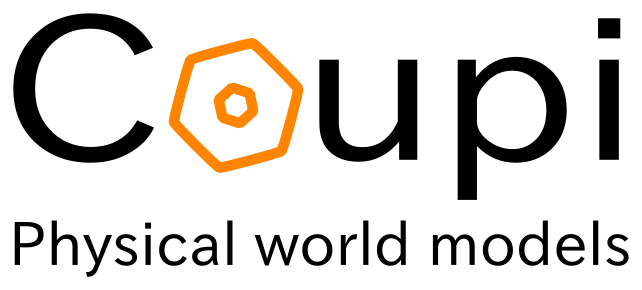Coupi hired four interns, all UAF students, to work in Fairbanks over the summer and part of the fall in 2018. You can learn a little more about us in CEO Johnson’s blog.
Coupi software uses the Discrete Element Method (DEM) to examine physical phenomena. This method involves looking at the interaction of particles on the microscale to determine effects on the macroscale. Metaphorically, this internship has been a learning experience of how individuals working together can learn from one another and accomplish tasks that would have otherwise been difficult or time-consuming at the least.
Getting Started
There is indeed method to the madness. The Fairbanks Coupi intern team of four started as a trio, with three interns dedicated to first learning enough of the Lua programming language to get started in Coupi and skimming through samples of what other existing DEM software suites could accomplish. Once the interns had enough functional knowledge and three adequately working installations of Cime (the Coupi Integrated Modeling Environment) they began working with the Coupi software directly.
The interns’ purpose was twofold. First, they were challenged with finding and reporting any bugs in the software to the software development team based in Kiev, Ukraine. Secondly, they were challenged with writing and editing portions of the user manual for the software. At the start, the interns were completely unaware of the challenge ahead of them. Over the course of 10 weeks, they reported 192 bugs to the software team, created several unique scenario scripts with varying levels of complexity, and created a rough draft of a help manual containing more than 46,000 words. For a sense of scale, that means that the manual was about 16,000 words longer than Shakespeare’s Hamlet and roughly on par with Fahrenheit 451.
Number 4 Arrives
At four weeks, another intern joined the crew. Hired to expressly help with marketing and researching potential clients, this intern doubled as a beta tester for the draft manual. Basically, while the software interns continued finding bugs while learning the software, this new intern’s purpose was to learn Cime through the manual. This enabled the rest of the interns to learn about glaring flaws in their writing. For instance, one of the earliest questions addressed to the rest of the interns was rather important:
“So, I have to create a scenario, right? Where do you even do that?”
Operations
Productivity was encouraged through the clever design of UAF’s Center ICE. The interns spend their days in a rather open room. Their local boss, Dr. Johnson, had an office adjacent to their workspace. With this setup, the interns are able to see each other’s screens and running simulations with a simple swivel of the chair. They also talked freely with one another, discussing current problems or pointing out cool behavior in a simulation. Of course, not all discussions stay on topic; however, the experience as a whole was a great benefit to productivity and unity.
Communications
Along with the complex nature of the DEM model, there were other challenges. One of the greatest was communication with the software development team. Coupi is a small company, but global. While the interns and CEO are based in Alaska, the Chief Technical officer resides on the eastern seaboard of the United States, and the software development team is primarily based in Ukraine.
Diversity is a strength, and the interns had great respect for the software developers (devs), but working in timezones with an eleven-hour difference added some complications. While the interns slept, the dev team worked. While the interns worked, the dev team slept. The system worked well in some ways. Often, bugs reported in the last half hour of a workday would be completely fixed by the time the interns returned to work the next morning! However, this wasn’t always the case.
With more complex bugs, where devs wanted to test a few different possible solutions, or where a fix didn’t quite fix the bug on the first try, the time zone difference was problematic. While occasionally a dedicated developer will stay up long past bedtime to have real-time email correspondence, it was more common to only have a single response or solution to work with. an intern tried a solution and reported the results to the dev team for further consideration during their next working day.
Looking Back
Overall, the internship was a chance to learn more about how working as a team can highly benefit productivity, expand technical skills in communication and the hard sciences, and learn more about a very interesting and promising modeling method. Over the course of the summer the interns became proficient with a new programming language, collaborated on pages and pages of technical writing, developed some interesting simulations, and had fun while doing all of it. You can learn more about intern adventures in coming blogs.

